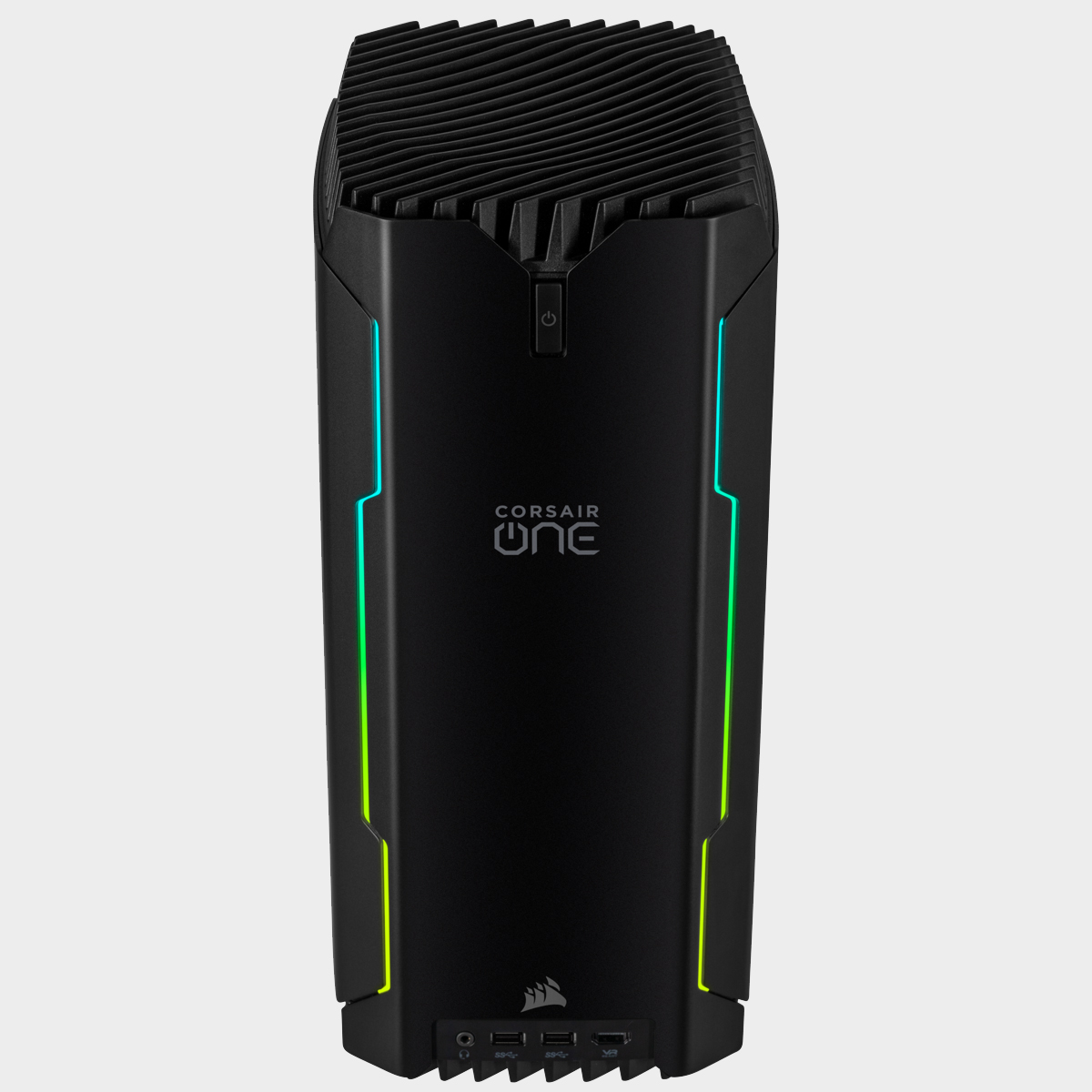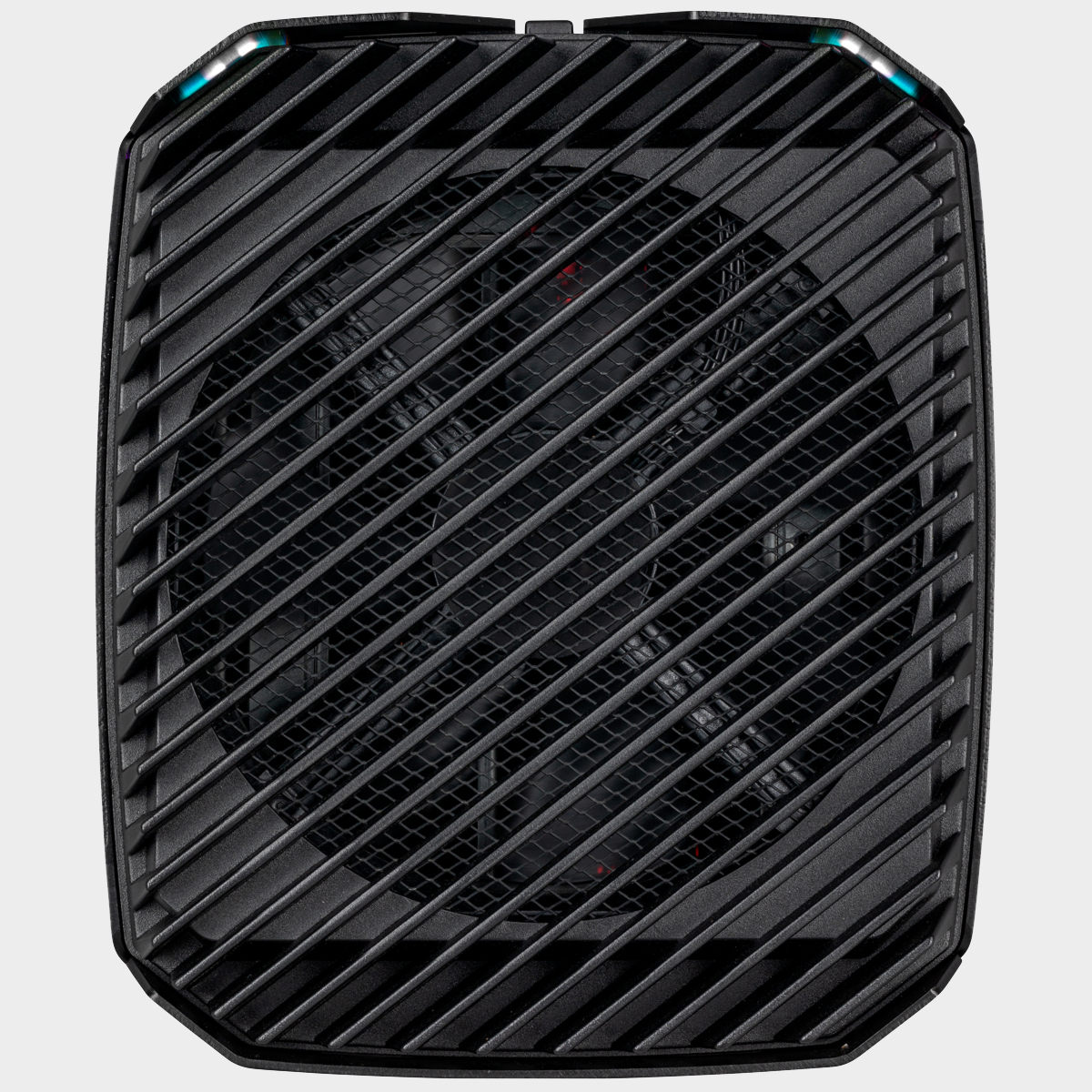Our Verdict
The Corsair One i160 keeps the best parts of the original model, but updates everything else to handle everything in the current, and future, gaming sphere.
For
- Excellent gaming performance
- Dead silent
- Gorgeous, small form factor design
Against
- Hard to access interior
PC Gamer's got your back
One of our highest rated prebuilt gaming PCs is back in a brand new model. Considering it wasn’t too long ago that Intel’s new processors and Nvidia’s new graphics cards first became available to consumers, it’s perfect timing for Corsair to update its One in preparation for all the ray tracing games set to hit the market this year. The Corsair One i160 is everything we loved about the original model with a few improvements. It’s is still the same, small form factor PC, but with updated hardware, a revamped internal layout, and a few other slight changes.
GPU: Nvidia RTX 2080Ti 11GB GDDR6 (liquid cooled)
CPU: Intel Core i9-9900K, up to 5.0GHz (liquid cooled)
Motherboard: Z370 Mini-ITX
RAM: 32GB (2x16GB) Corsair Vengence DDR4-2666
Storage: Samsung 480GB M.2 NVMe SSD, 2TB 2.5" SATA HDD
PSU: Corsair SF600 600W 80 Plus Gold
Dimensions: W: 7.9" H: 7.0" L: 15"
Weight: 16.3 lbs.
Warranty: 2 years
The case design is still the same ominous mini black tower that looks like, according to my mom, a humidifier. (You should have seen the look on her face when I told her it was a computer.) The same subtle RGB strips line both sides of the front of the tower—which I also think look Tron-esque—and if you have a Corsair mouse it will automatically sync with those strips thanks to Corsair’s iCue technology. The fans run at a frequency that only dogs can hear when actively spinning, even when the system is under load. They increase speed independently based on needs of individual components. Otherwise, the fans are completely off when the system is idle thanks to the Zero RPM Mode.
The CPU and graphics card both still use independent waterblocks, pumps, and radiators, and the entire internal cooling system supports up to 165W on the CPU and 300W on the graphics card. With the CPU and graphics card each placed on opposite sides of the case, cool air is drawn in from the sides and expelled out the top via one 140mm maglev fan.

As for the internal layout as a whole, there’s been some minor shifting around of components. Comparing photographs of the previous model to the new model, the PSU now sits below the motherboard in the Corsair One i160 instead of being situated above in the Corsair One, but that’s the extent of the layout changes. Having not tested the One myself when it was first introduced, I cannot say if there is any difference in how quiet or loud the One i160 is compared to the first model, but all that matters is that it's dead silent.
The USB and HDMI ports have been moved to the bottom, instead of sitting right below the power button, and Corsair also added a combination audio/headphone jack on the bottom-front as well. The only issue with having the HDMI port at the bottom of the case is that the cable can get in the way of your mouse depending on how you have the tower orientated on your desk. There are three DisplayPorts on the back of the case, though, so if you're running up to a triple monitor setup with those cables, then you don’t need to worry about the HDMI port at all. There’s just enough USB ports on the back for all the essential streaming peripherals, too.
Everything fared as expected during our benchmarking tests. The liquid cooled Intel Core i9-9900K clocked in at 1,832 on Cinebench, and the RTX 2080 Ti spat out some ridiculous numbers in 3DMark and during our in-game tests. In 3DMark, those were 26,867 (1080p), 15,848 (1440p), and 8,236 (4K). Our in-game benchmarks revealed Totalwar: Warhammer II running between 107-125 fps depending on the game mode, Shadow of the Tomb Raider running at 144fps, and Ghost Recon: Wildlands averaging at 90 fps all at 1080p on ultra. You might get under 50-60 fps at 4K, depending on the game and what settings, but well over 60 fps at 1440p.

To top it off, this system is upgradable, if you feel like tackling the hard-to-access interior, just like the previous model. Storage and DRAM are both upgradable, and the GPU cooling system can be decoupled from the CPU cooling system, allowing for any future upgrades to the graphics card (although right now it’s too early for me to imagine where Nvidia will go next after ray tracing).
If you’re looking for a compact and powerful gaming rig, the Corsair One i160 needs to be on your wishlist. Prebuilts do usually come with the added premium of not having to put it together yourself, but this $3,599 unit is not only around the same DIY price of an extreme build, but where else are you going to find a small form factor case that looks like that? No where, that’s where. Corsair also offers a cheaper model, the i140, which comes with an Intel Core i7-9700K and a RTX 2080 for $2,999, if you want a slightly less powerful rig in the same chassis for $600 less.
But, the Corsair One i160 will definitely remain on our list of best gaming PCs for the foreseeable future.
The Corsair One i160 keeps the best parts of the original model, but updates everything else to handle everything in the current, and future, gaming sphere.



